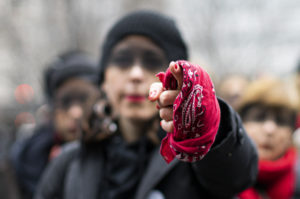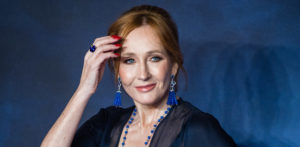There was a brief moment, at the very beginning of the MeToo movement, when it seemed as if real change was in the air. Five years ago this week, the New York Times released its first report on the alleged predations of Harvey Weinstein, whose bad behaviour seemed to be transitioning at last from an open secret in Hollywood to a chargeable offence in court. In the months that followed, a wave of demands for accountability crashed over every industry where power coalesced. People were talking at last about the inescapability of being sexualised at work, where degradation might come not only in the form of being punished for refusing a boss’s advances, but also in being sidelined for not being hot enough to attract such advances in the first place.
What made this moment so revelatory was not just what was being said, but who was saying it. In a world of “he said, she said”, what she said finally seemed to matter. Women were breaking the silence; women were blowing the whistles; women were telling their stories, and retelling each other’s, in the press. The two New York Times journalists who exposed Weinstein were women. Women owned this narrative…
Until they didn’t.
Men laid claim to the MeToo narrative in the way that Hemingway’s protagonist in The Sun Also Rises went bankrupt: gradually, then suddenly. The shift could be observed first on social media, where men sensing the impending tectonic cultural shift began to seek firmer footing in the form of compulsive privilege-checking. They retweeted, they hashtagged, they made grovelling apologies on behalf of their sex — while also making sure to let you know that they were not among the men who needed to apologise, those troglodytes, those boors. Even the men who rushed to confess their own sins made sure to covertly congratulate themselves in the process for having always known better, been better, than the really bad guys. New York Times essayist George Yancy, suggested in an infamous piece that men atone en masse, online, under the hashtag #IAmSexist, even though “many of us, including me, have not committed vile acts of rape, sexual assault and sexual abuse the likes of which Harvey Weinstein has been accused of”.
It’s understandable. The MeToo movement was dividing the men of the world into heroes and villains; most men, naturally, wanted to be on the right side. And in this moment, onto the national stage, the most right-sided of them all emerged: Ronan Farrow.
Farrow was chasing the Weinstein story at the same time as the New York Times journalists, but his first report, for the New Yorker, didn’t come out until five days later. Still, he is regularly described — here in The Times of London — as “the man who exposed Harvey Weinstein”. The book he wrote about his MeToo reporting, Catch and Kill, was the same in substance if not in scale as all the men proclaiming their intent to #BelieveWomen on social media. Imagine every white-knighting male feminist ally impulse blown up to national (and extraordinarily telegenic) proportions: here was Farrow, vowing to use his position of privilege to speak on behalf of the downtrodden, to uncover injustice, and in doing so, atone for his complicity in the system that had wrecked women’s lives.
Farrow, who is gay, couldn’t claim to be a reformed cad à la the Yancys of the world, but a family connection to a famous sexual assault case — his father, Woody Allen, was accused of molesting his sister Dylan in 1992 — served the same purpose: “I once was one of those guys proximate to a woman with a claim like this saying, ‘why don’t you just shut up about it?’” Farrow said, on PBS NewsHour in 2019.
If MeToo coverage until this moment was by women, about women, Farrow injected a new perspective — and an elevated sense of drama. His reporting was very often described as “explosive”. Even as he claimed to be merely a conduit for the testimonies of courageous women, those women had a way of fading into the background of his stories, eclipsed by the jaw-dropping villainy of whichever man he accused — but also by the presence of Farrow himself, chasing leads. His quest to uncover evidence that Weinstein had hired surveillance operatives in an attempt to stop him from telling the truth is a prominent and thrilling subplot in Catch and Kill. It was all too easy to forget the female victims in the face of such a compelling narrative — one about a dogged, handsome reporter battling a conspiracy of menacing evildoers in America’s glitziest and most elite industry.
And from this moment, what did we think of when we thought of MeToo? Something dramatic. Something sensational. Something with movie stars in it, maybe, or at least someone who hung out with them. At the beginning, the whole point of this movement — the reason why the hashtag was MeToo and not something else — was its ordinariness. Here was an indignity to which virtually all women could relate: not just the fear of being assaulted, or harassed, or propositioned, but the sense of sex looming like a shadow over their professional lives in a way that was frustrating, and limiting, and invisible to men.
But that ordinary narrative was, well, ordinary. It certainly wasn’t winning the Pulitzer anytime soon. People didn’t want the banal injustice of women’s daily lives; they wanted Harvey Weinstein, panting and whining and banging on doors like the lecherous troll in a Grimm’s fairy tale. They wanted Matt Lauer imprisoning nubile young women in his office using a secret button under his desk, like the bad guy in a James Bond movie. They wanted Brett Kavanaugh lining up to commit high school gang rape like a real-life Gossip Girl episode. They wanted larger-than-life villains committing acts of unfathomable evil — and they wanted a blond, blue-eyed Captain America of a journalist to serve them up on a platter, at great personal risk to himself. The fact that Ronan Farrow claimed to be a victim himself — not of sexual assault but of surveillance, harassment and intimidation by a powerful cabal of men who did not want these stories told — only made it that much more exciting. And the fact that these stories often turned out not to be entirely true? It hardly mattered at all.
In 2020, New York Times reporter Ben Smith wrote what remains the most definitive dissection of the inadequacies in Farrow’s reporting, noting (among other things) that Farrow had cut corners when it came to verifying stories and checking facts, and had sacrificed nuance in his reporting in order to make his stories more straightforwardly dramatic. “The best reporting tries to capture the most attainable version of the truth, with clarity and humility about what we don’t know,” Smith wrote. “Instead, Mr. Farrow told us what we wanted to believe about the way power works, and now, it seems, he and his publicity team are not even pretending to know if it’s true.”
But Farrow’s place as the poster child for MeToo reporting is about more than the siren song of shoddy journalism. It’s about what the movement could have been, and what it eventually became instead — because in hindsight, Farrow hitching his apple wagon to the star of MeToo seems like a harbinger of all the ways in which the movement would eventually fly off the rails.
There was the emergence of grifters and hucksters like the now-disgraced Michael Avenatti, who first rose to prominence as the attorney representing Stormy Daniels in her lawsuits against Donald Trump, and later promulgated explosive (and ultimately discredited) allegations of gang rape by a then-teenaged Brett Kavanaugh. He was a darling of the MeToo media — until he went to prison for extortion and embezzlement. There was the way that the everyday sexism faced by working-class women in less glamorous professions vanished from the conversation, replaced by thinly-sourced celebrity gossip and first-person essays from supermodels with books to promote. There was the way that MeToo eventually came to serve as a magnet for the romantically embittered and the professionally jealous, and allegations of sexual misconduct became a magic bullet for relegating a loathed ex or competitive colleague to the fringes of society.
It’s not that Farrow is to blame for these things; it’s that where a male celebrity reporter was able to cast himself as the true protagonist of a story about women, other sorts of opportunism would invariably also find fertile ground. But it’s also telling that today, five years later, it’s hard to think of anyone for whom the MeToo movement was better — or anyone who remains more visibly connected to it — than Ronan Farrow.
Citations of his Pulitzer prize-winning journalism almost invariably fail to note that he shared the honour with the two women who exposed Weinstein in the New York Times, women who broke the story first and yet have always been a distant second to Farrow when it comes to getting famous from it. Their book about uncovering the story, She Said, did not make headlines in Hollywood Reporter for having sold 44,000 copies in its first week, unlike Catch and Kill. Their audiobook didn’t get a Grammy nomination, unlike Farrow’s (he voiced it himself). Farrow is the one being lionised in the Hollywood press as a having “ignited the movement”. He’s the one lingering in the spotlight, long after the villains have gone to prison and the victims have moved on with their lives. The only name more closely associated with the movement, ironically, is Weinstein’s.
And the ordinary women who once saw hope in MeToo, which was supposed to transcend boundaries of industry and geography, education and class? We haven’t just forgotten their names; we never knew them to begin with.
Disclaimer
Some of the posts we share are controversial and we do not necessarily agree with them in the whole extend. Sometimes we agree with the content or part of it but we do not agree with the narration or language. Nevertheless we find them somehow interesting, valuable and/or informative or we share them, because we strongly believe in freedom of speech, free press and journalism. We strongly encourage you to have a critical approach to all the content, do your own research and analysis to build your own opinion.
We would be glad to have your feedback.
Source: UnHerd Read the original article here: https://unherd.com/




